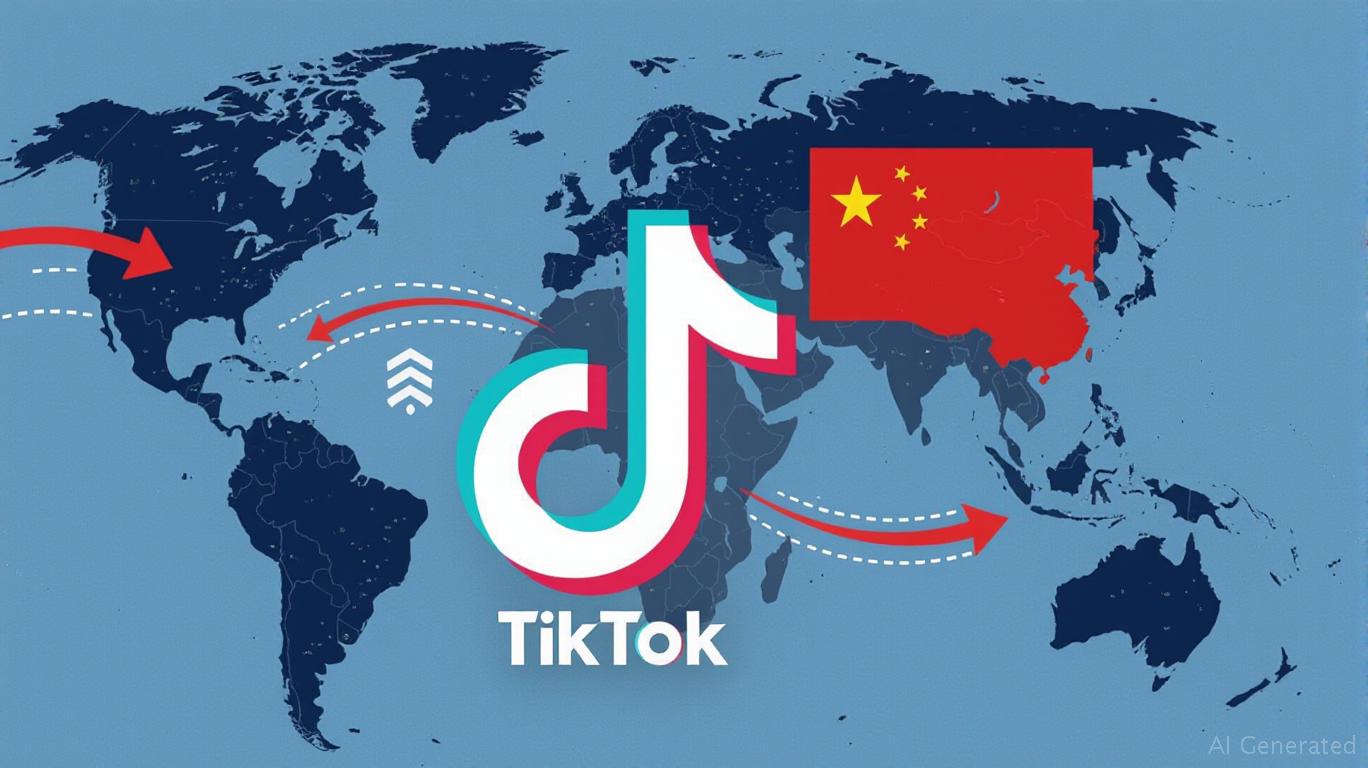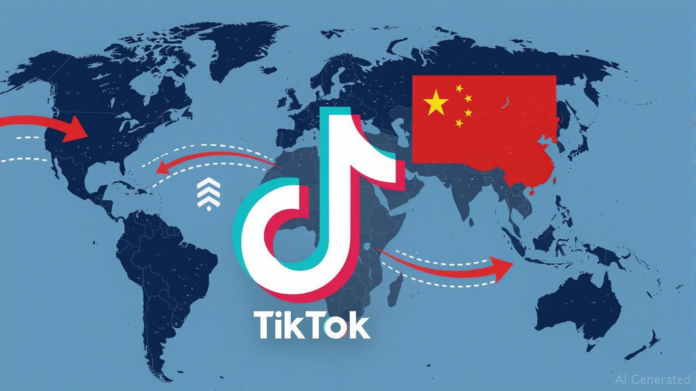The fate of TikTok’s U.S. operations hangs in a geopolitical balancing act, with implications extending far beyond a single app. As the U.S. and China engage in high-stakes negotiations over data security, ownership structures, and national sovereignty, the outcome will ripple through global tech ecosystems. For investors, this is more than a regulatory headache—it’s a window into valuation opportunities and sector-specific risks tied to the era of techno-nationalism. Let’s dissect how cross-border tech collaborations are evolving and where to place bets.

The Geopolitical Chessboard: Risks and Leverage
The U.S.-China TikTok talks, now in their third extension (deadline pushed to September 2025), epitomize the tension between economic pragmatism and security fears. The White House’s repeated delays signal a recognition of TikTok’s cultural and economic clout—its AI-driven “Symphony” tools now power $40 billion in annual ad revenue—while China’s ByteDance faces a dilemma: divest or risk retaliatory tariffs on its exports.
The core issue? Data sovereignty. U.S. regulators demand TikTok’s U.S. user data be stored and managed domestically, insulated from Chinese influence. Beijing, meanwhile, requires ByteDance to adhere to its own export controls on critical tech like TikTok’s algorithm. This standoff has birthed creative compromises, such as Oracle’s (ORCL) bid to host U.S. data via its “Project Texas” initiative. Yet progress remains slow, as both sides use the talks as leverage in broader trade disputes over tariffs and rare earth mineral exports.
For investors, the takeaway is clear: tech assets with cross-border exposure are now geopolitical pawns. Companies caught in the crossfire—like Chinese cloud providers or U.S. firms reliant on Chinese supply chains—face valuation drags until clarity emerges. Conversely, firms offering solutions to data localization or cybersecurity concerns stand to benefit.
Valuation Gaps: Winners and Losers in the Data War
The TikTok saga highlights two key investment angles:
- Data Localization & Cybersecurity: Firms enabling secure cross-border data flows or offering compliance tools are undervalued relative to their strategic importance. Consider CrowdStrike (CRWD), whose cloud-native cybersecurity platforms could safeguard TikTok-like data pipelines, or Palo Alto Networks (PANW), which specializes in threat detection for multinational enterprises. Both trade at P/E ratios below their 5-year averages despite rising demand for their services.
Meanwhile, Oracle (ORCL) and Microsoft (MSFT)—already in the TikTok data storage fray—could see upside if their partnerships solidify. Oracle’s cloud business, a linchpin of its TikTok strategy, now accounts for 22% of revenue but trades at just 11x forward earnings, a discount to its growth trajectory.
- AI Infrastructure Players: TikTok’s “Symphony” suite underscores the rising value of AI-driven tools. Companies like NVIDIA (NVDA), whose GPUs power generative AI models, or C3.ai (AI), which develops enterprise AI solutions, could benefit as platforms like TikTok invest in proprietary tech to differentiate themselves. However, geopolitical risks linger: China’s export bans on semiconductors threaten NVIDIA’s supply chain, creating a valuation drag until trade tensions ease.
Sectors to Watch: Playing Both Sides of the Divide
- Cloud Providers: Oracle, Microsoft, and Amazon (AMZN) dominate U.S. cloud infrastructure, making them critical enablers for any TikTok-like data localization deals. Their scale and geopolitical neutrality position them to capture cross-border tech contracts.
- Cybersecurity: Beyond CRWD and PANW, Zscaler (ZS) and Fortinet (FTNT) offer zero-trust architectures ideal for multinational firms seeking compliance.
- Semiconductors: ASML (ASML) and Applied Materials (AMAT), critical to chip manufacturing, could rebound if U.S.-China semiconductor talks progress, though risks remain tied to export controls.
Avoid pure-play Chinese tech giants (e.g., Alibaba, Tencent) unless Beijing signals regulatory truce. Their stocks remain hostage to trade war whims, with valuations at historic lows but upside limited until policy clarity arrives.
Investment Strategy: Playing the Pivot
- Long-Term Plays:
- Buy cloud/cybersecurity leaders (ORCL, MSFT, CRWD) on dips. Their secular growth trajectories outweigh near-term geopolitical noise.
-
Consider NVIDIA (NVDA) if U.S. semiconductor subsidies offset China’s export curbs.
-
Short-Term Opportunities:
- Short TikTok-linked stocks like ByteDance’s listed rivals (e.g., Sea Group (SE)) if talks collapse, but avoid direct bets on TikTok itself (non-public).
-
Use ETFs like QQQ (Nasdaq 100) for diversified exposure to tech leaders, paired with PUT options to hedge against regulatory shocks.
-
Policy-Driven Trades: Track U.S.-China tariff announcements and TikTok’s operational milestones. A mid-September deal could trigger a rally in cross-border tech stocks, while a stalemate might boost cybersecurity plays as firms double down on data protection.
According to historical backtests, this approach has been validated: a strategy of purchasing these stocks five days before negotiation deadlines and holding for 30 days post-resolution from 2020 to 2025 generated a 26.19% total return with an 11.25% annualized return, outperforming benchmarks while managing risk (maximum drawdown of -15.87%). This underscores the potential rewards of timing investments around these critical geopolitical milestones, as market volatility during negotiations often creates entry points for strategic gains.
Conclusion: The New Tech Divide is Here to Stay
The TikTok saga is a microcosm of a broader trend: tech collaboration is now inseparable from geopolitics. Investors must treat cross-border tech assets as high-risk, high-reward plays, favoring firms with dual-market agility. While the path to resolution remains fraught, the winners will be those that bridge the U.S.-China divide—securely, smartly, and profitably.
Stay vigilant, and position portfolios to profit from the friction.






